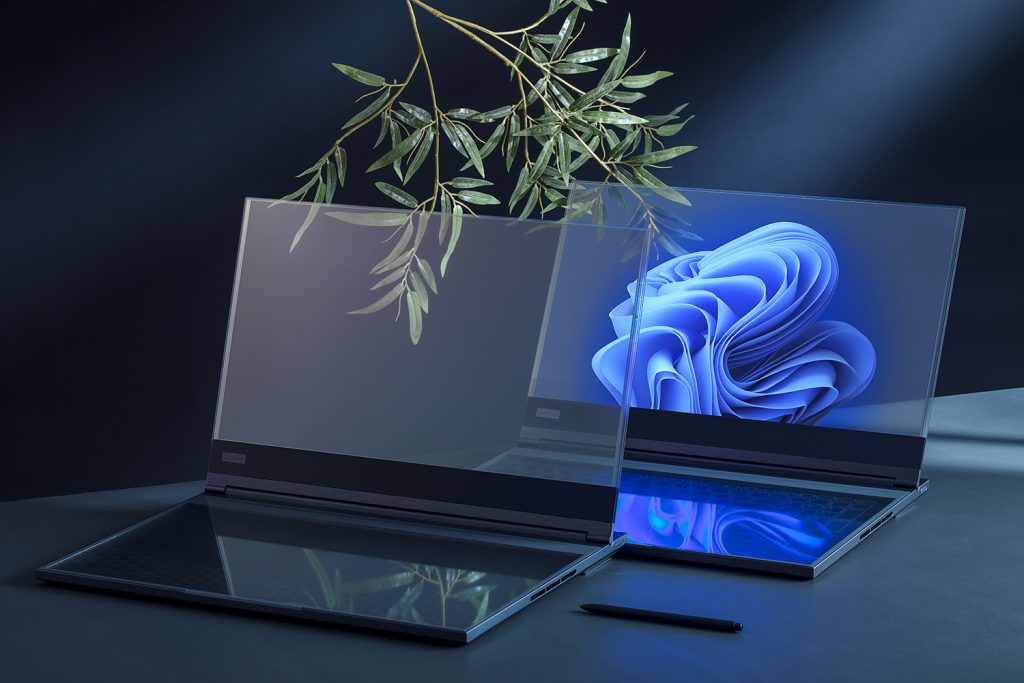Transparent Lenovo laptop takes us Through the Looking-Glass
It seems very pretty, but it's rather hard to understand!

Lenovo is known for many things: the ThinkPad business and Legion gaming laptop, a ginormous assortment of 2-in-1 Yoga notebooks, and the kind of weird and wacky Research and Development that would make the diary of Nikola Tesla blush.
From its skyscraper Yoga Book 9i to the laptop/tablet ThinkBook Plus Gen 5 Hybrid that took CES 2024 by storm, Lenovo is no stranger to thinking outside of the box. And, in a move that might be its most jaw-dropping yet, Lenovo has just revealed its latest concept: 'Project Crystal,' a near-completely transparent laptop.
Lenovo ThinkBook Transparent Display Laptop Concept
Some brands like to gently nudge the boundaries of what is possible while they accommodate the latest tech to hit the market. Other brands, and I'm looking at you Lenovo, are so forward-thinking that their concepts are basically passive-aggressive admissions that they feel they exist around 20 or so years too soon for this world.
In a showcase of that frustration, Project Crystal, now also known as the wordier-than-a-bathtub-full-of-Alphabetti-Spaghetti "Lenovo ThinkBook Transparent Display Laptop Concept," doesn't so much gently pull back the curtain for a glimpse into the future, as it cleaves down the door that hampers progression with an axe like it's finally had enough of all work and no play at the Overlook Hotel.
Forget everything you know about a laptop, other than the fact it features a clamshell hinge. Lenovo's concept is a ground-up reinvention in style, presentation, interaction, and design.
Project Crystal: A Micro-LEDelight
The 17.3-inch display is almost completely transparent, allowing images to seemingly float like holograms on the gently frosted panel before you. There are no bezels or borders in place for Lenovo to hide the magic projected in front of you, just a clear panel housed atop a deck of mystery.
Just what can explain Lenovo's mind-bending laptop concept? Time travel? Alien technology? It actually comes down to the much simpler and less reality-distorting adoption of Micro-LED technology and Artificial Intelligence Generated Content (AIGC).
Sign up to receive The Snapshot, a free special dispatch from Laptop Mag, in your inbox.
It's presumed that the Micro-LED display makes use of emissive and conductive layers that can be turned opaque using various electrical impulses. This means that when you require a section of the screen to appear transparent, no impulse is sent to that part of the screen, rendering it completely see-through.

A likely laptop?
This stunning display technology, paired with the laptop's transparent touch surface deck, and floating footpad design should place it somewhere in the distant future when it comes to release dates, but Lenovo is reportedly taking its concept as a very real and serious possibility to eventually bring to market.
While still in its concept cocoon, Project Crystal has a long way to go before being ready to land in consumer's hands, but there have been many times in the past where Lenovo's concepts have ended up on store shelves, despite many presuming them to be nothing more than technological showcases when they were first unveiled.
Is the ThinkBook Transparent Display Laptop Concept the device of tomorrow? Or is Lenovo a little too far through the looking-glass when it comes to its transparent ambitions? We can't say for sure, but I'm sure we're not alone in hoping for the former rather than the latter.
More from Laptop Mag
- Best Lenovo laptops in February 2024
- Best ThinkPad in February 2024
- Best laptop 2024: 10 best laptops tested and rated

Rael Hornby, potentially influenced by far too many LucasArts titles at an early age, once thought he’d grow up to be a mighty pirate. However, after several interventions with close friends and family members, you’re now much more likely to see his name attached to the bylines of tech articles. While not maintaining a double life as an aspiring writer by day and indie game dev by night, you’ll find him sat in a corner somewhere muttering to himself about microtransactions or hunting down promising indie games on Twitter.









